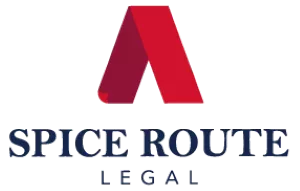- in Asia
- in Asia
- in Asia
I. BACKGROUND
Towards the end of 2022, the Insurance Regulatory and Development Authority of India ("IRDAI") commiBed to extend 'Insurance for All' by 2047, and consItuted a commiBee to make recommendaIons regarding the following:1
- Bima Vahak, a new channel of insurance distribuIon;
- Bima Vistaar, simple, economical, and comprehensive insurance products;
- Bima Sugam, a digital public infrastructure to facilitate the e-commerce of insurance products.
While the launch of Bima Sugam is reportedly delayed, the IRDAI has laid down a regulatory framework for the distribuIon of Bima Vistaar. On 9th October 2023, IRDAI issued the Insurance Regulatory and Development Authority of India (Bima Vahak) Guidelines, 2023 ("Guidelines") to establish an insurance distribuIon channel specifically dedicated to rural areas. The Guidelines nudge insurers to progressively engage Bima Vahaksin every Gram Panchayat in India before 31st December, 2024.2 The Guidelines will come into effect as and when IRDAI launches Bima Vistaar.3
II. STRUCTURE AND REGULATORY FRAMEWORK
The contours of the Bima Vahak distribuIon channel run parallel to those of the agent distribuIon channel. A Bima Vahak may be an individual ("Individual Bima Vahak") or a legal person ("Corporate Bima Vahak") that engages mulIple Individual Bima Vahaks.4 To become a Bima Vahak, an individual or enIty must enter into an agreement with the insurer.
However, unlike typical IRDAI regulaIons on insurance intermediaries, the Guidelines do not specify any eligibility criteria, any licence requirements, or any limit on the number of insurers that a Bima Vahak may partner with. AddiIonally, while the IRDAI encourages Bima Vahaks to be women-centric,5 this is not mandatorily required under the Guidelines.
The Guidelines merely consItute a preliminary framework issued to prepare the insurers for Bima Vahaks and Bima Vistaar. The Life Insurance Council and the General Insurance Council will jointly issue standards to govern Bima Vahaks.6 Such standards will include:
- minimum educaIonal standards for Bima Vahaks;
- scales of commissions for Bima Vahaks;
- training requirements (including customer due diligence/ KYC process, personal data protecIon, policy handling and claims service support) for Bima Vahaks;
- standard terms of appointment (including due diligence requirements, issuance of idenIficaIon cards) for Bima Vahaks;
- maintenance of database (including confidenIality of the policy data solicited through Bima Vahaks); and
- other operaIonal and compliance aspects.
III. SCOPE OF SERVICES
A Bima Vahak will act on behalf of its partner insurers to solicit business for Bima Vistaar, issue and service insurance policies, and assist the policyholder with claimsseBlement.7 InteresIngly, a Bima Vahak can sell and service insurance only using handheld electronic communicaIon devices directly integrated with the electronic placorm of the insurers.8 The Bima Vahak may use such devices to file proposal forms, undertake KYC, and collect insurance premiums as well.9 On receipt of premiums, an electronic acknowledgement must be issued to the policyholders in a regional language, Hindi or English.10 While Bima Vahak cannot collect any fees other than the insurance premium,11 we expect Bima Vahaksto be paid for theirservices directly by the insurer.
In light of the funcIonaliIes described above, insurers are expected to invest in appropriate systems processes, internal controls and infrastructure to enable seamless interface with all Bima Vahaks.12 AddiIonally, insurers must implement appropriate measures to ensure business conInuity, given that the Guidelines require them to ensure uninterrupted service to the policyholders.13
IV. OBLIGATIONS OF INSURERS AND CONSUMER PROTECTION
Insurers must designate a Complaints Handling Officer in a local office nearest to the Gram Panchayat, to specifically aBend to the complaints against Bima Vahaks.14 AddiIonally, insurers and Corporate Bima Vahaks must issue idenIficaIon cards to Individual Bima Vahaks.15 Further, Corporate Bima Vahak, at each of its retail outlets, must display the following:16
- the names of the Bima Vahak, name of the appoinIng insurer and telephone number(s) of the branch or other controlling office of the insurer;
- a signage indicaIng the services offered by the Bima Vahaks;
- the contact details of designated Grievance Redressal Officer of the insurer;
- the name and contact details of the Complaints Handling Officer designated to specifically address complaints against Bima Vahaks; and
- the contact details of the Insurance Ombudsman.
AddiIonally, the Guidelines require insurers to:
- remain responsible for the conduct of Bima Vahaks;17
- implement a board-approved policy in respect of maBers related to Bima Vahaks; and18
- ensure KYC and AML compliance with respect to policies sourced through Bima Vahaks.19
V. COMMENTS
Over the past few years, the IRDAI has taken steps to foster innovaIon in the insurance sector and extend insurance coverage. For instance, IRDAI has decided to hold periodic open house discussions with insure-techs, extended the 'use and file' procedure to most insurance products, and partnered with the NaIonal Health Authority to lay down building blocks of the NaIonal Health Claims Exchange. RecogniIon of Bima Vahaks as a women-centric distribuIon channel is another welcome step in this regard, and it appears that the IRDAI is learning from other regulators.
IRDAI's Bima Vahaks build upon the success of similar iniIaIves in the banking and pension sectors. Bima Vahaks serve similar purposes as the ones fulfilled by business correspondents engaged by banks and points-of-presence, i.e., last-mile grassroot coverage of regulated products. Bima Vahaks and business correspondents do not require licences and their acIviIes are primarily governed by a contract. Accordingly, barriers to entry are relaIvely low. This is quite significant in the insurance sector, given that the distribuIon and solicitaIon of insurance business was considered to be highly regulated. The Guidelines also reflect IRDAI's inclinaIon towards self-regulaIon, a pracIce prominent in the securiIes market.
Footnotes
1. Insurance Regulatory and Development Authority of India, Press Note dated 25.11.2022; IRDAI Order IRDAI/LIFE/ORD/MISC/223/10/2022 dated 21.20.2022.
2. Para 4(g), Guidelines.
3. Para 1(b), Guidelines.
4. Paras 3 and 4(c), Guidelines.
5. IRDAI Order IRDAI/LIFE/ORD/MISC/223/10/2022 dated 21.20.2022.
6. Para 4(e), Guidelines.
7. Paras 4(a), 4(d) and 5(a)(i), Guidelines.
8. Para 4(d)(ii), Guidelines.
9. Paras 5(a)(i) and 7(a), Guidelines.
10. Para 7(a), Guidelines.
11. Para 4(d)(iii), Guidelines.
12. Para 8, Guidelines.
13. Para 9(b), Guidelines.
14. Para 11, Guidelines.
15. Para 10(a)(i), Guidelines.
16. Para 10(b), Guidelines.
17. Para 4(b), Guidelines.
18. Para 4(f), Guidelines.
19. Para 6, Guidelines.
The content of this article is intended to provide a general guide to the subject matter. Specialist advice should be sought about your specific circumstances.





